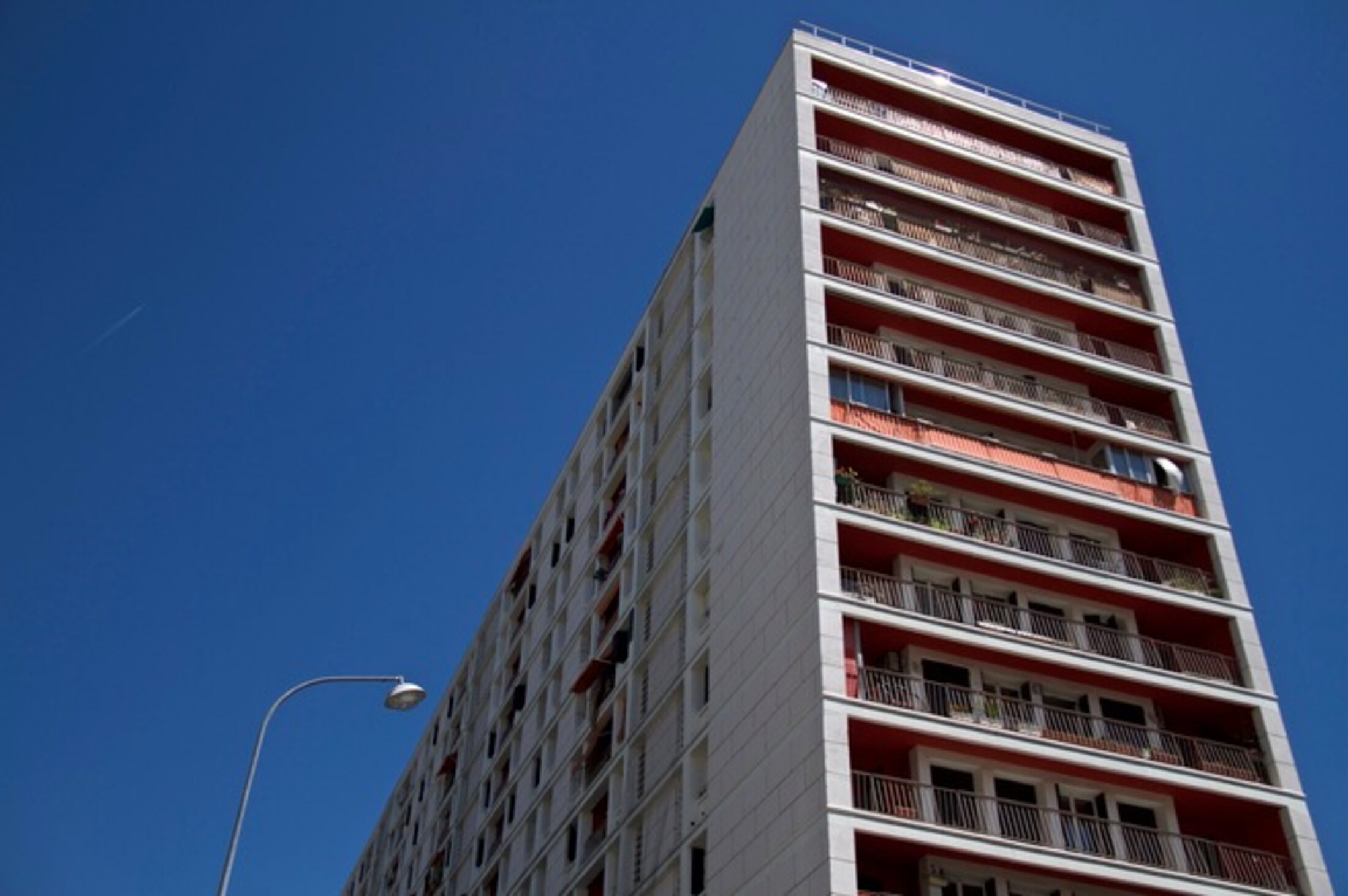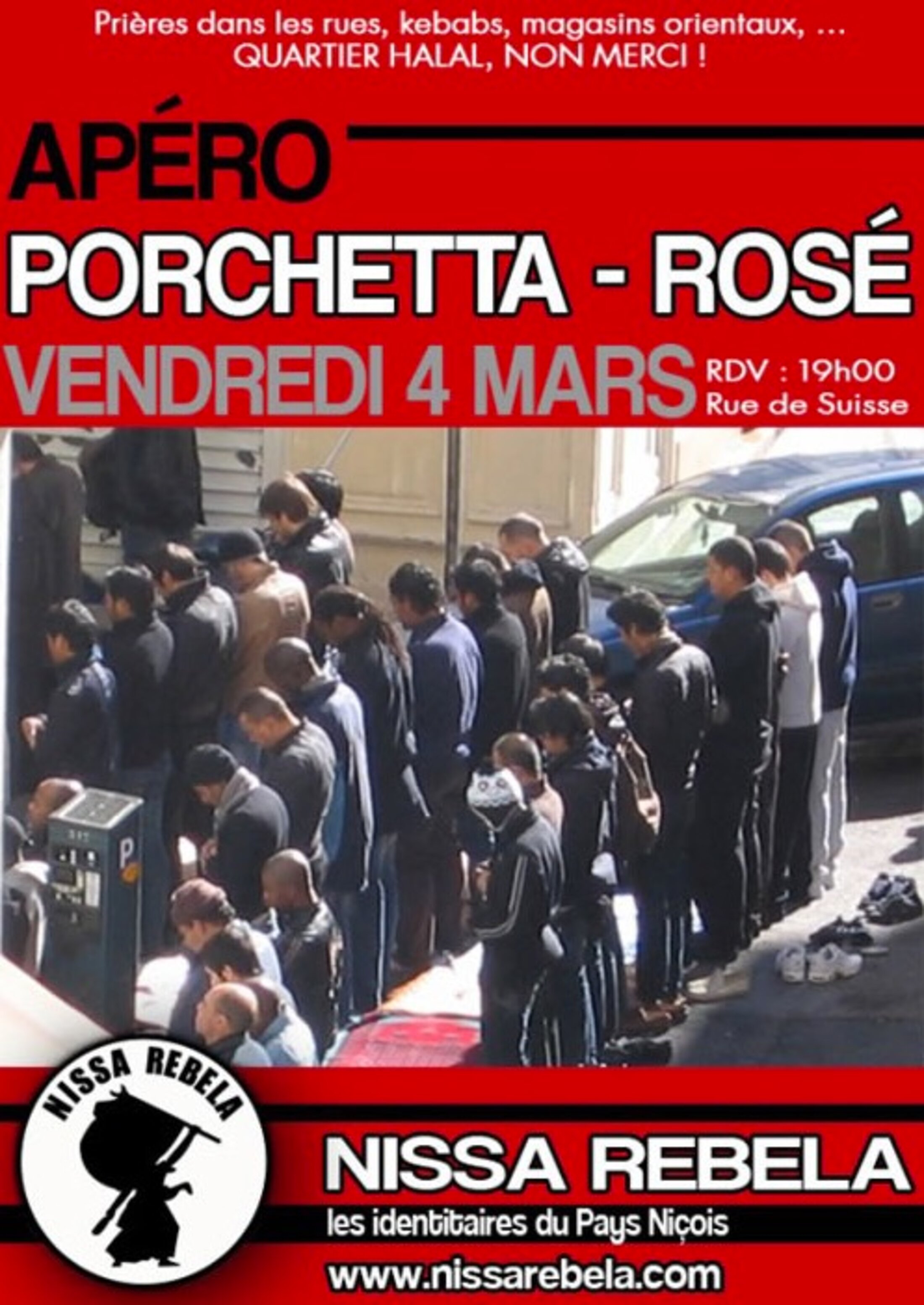In this city of 343,000 inhabitants, the fifth largest in France, the hard- and far-right have a long history of local rule.
The conservatives now in charge of the City hall and the region’s council are nick-named “the Medecin babes”, in reference to the late Jacques Medecin, right-wing mayor of Nice from 1966 to 1990 and who once declared that he subscribed to “99.9 percent” of the ideas of the far-right Front National.
They are led by local Member of Parliament (MP) Christian Estrosi, a prominent member of Nicolas Sarkozy’s Les Républicains party, who stood down as mayor of Nice when he was elected as president of the regional council last year. Estrosi and his party won the regional elections in November 2015 after narrowly avoiding defeat at the hands of Front National , whose candidates, led by Marion Maréchal-Le Pen, garnered 37.9% of votes cast in the Alpes-Maritime département (county) in which Nice sits.

Enlargement : Illustration 1

Racial tensions, or more precisely openly anti-Arab sentiment directed by a section of the population at the region’s inhabitants of North African origin, are notorious. But, says Feiza Ben Mohamed, spokeswoman for the Nice-based southern France Federation of Muslims, the climate degenerated further since the January 2015 terrorist attacks in Paris - against Charlie Hebdo magazine and a kosher supermarket - and the refugee crisis in Europe. “After Charlie Hebdo, we saw neighbours, who had lived side-by-side for ten years, denounce each other,” she said. “Racist talk was already quite unrestrained. Now it’s going to get even worse.”
The Bastille Day massacre has clearly exacerbated and already critical atmosphere, as illustrated by a video relayed by social media on Monday (see below). It shows an altercation among the crowds of people who joined in the midday commemoration for the dead and injured in the truck attack by 31-year-old Tunisian Mohamed Lahouaiej Bouhlel last Thursday evening. A dark-skinned woman who had joined in the minute’s silence (which in fact was interrupted by singing) is notably targeted by individuals who tell her to “get out of here”” and to “go home”.
#Nice, une population sous tension après l'attentat du 14 juillet. pic.twitter.com/1eN2OakDgy
— Remy Buisine (@RemyBuisine) 18 juillet 2016
“It was hyper-electric”, recalled Feiza Ben Mohamed, who was present at the scene. “Since three days, a number of people who go to pay tribute [to the victims] have been spat upon. People move away from the path of women wearing veils.”
The efforts by some to avoid stigmatization of the Muslim population amid the recent climate were a lost cause as soon as the identity of the truck driver was known. For many in Nice, his North African name blurred all consideration for his first victim, 60-year-old Fatima Charrihi, as for Bilal Labaoui, Abdelkader Toubakri, 12-year-old Mehdi, and 4-year-old Killian and his mother Olfa, all of whom were also mowed down by Bouhlel and whose bodies are to be repatriated to Tunisia. The Rector of the Nice Great Mosque, Otmane Aïssaoui, told French catholic daily La Croix that 30 people among the 84 killed by Bouhlel were Muslims, including “about 20 Tunisians”.
According to the French National Institute of Statistics and Economic Studies (INSEE), in 2012 Nice had a population of 10,300 Tunisians, 7,066 Moroccans and 7,156 national of other African countries. Last Thursday evening many of the town’s immigrant and immigrant-origin population were among the estimated 30,000 people thronging the Promenade des Anglais and its neighbouring streets to watch the traditional Bastille Day fireworks display – watched by the city’s wealthiest from the comfort of their apartment balconies.
According to INSEE, 17% of the overall population of the surrounding Provence-Alpes-Côte d’Azur (PACA) region lived below the poverty line in 2012, the latest yuear for such data. Nice has the largest social divide in the Alpes-Maritime département (county), one of six that make up the PACA region. The average income of the wealthiest 20% of Nice’s population is more than five times that of the poorest 20%.
The upmarket districts of Gairaut and Cimiez contrast starkly with the drab housing estates of Moulins and Ariane. The latter are the hidden face of the city, masked by the tourist office. They are, explained Yvan Gastaut, teacher and researcher in the “migration and society” department of the University of Nice, “large housing projects that were built in the 1960s to gentrify the Old Nice [quarter] and to eradicate the shantytowns”.
“They housed a whole population of workers, poor and often of immigrant origin,” said Gastaut, who added that these neighbourhoods sited several kilometres from the centre of the city have “constantly been poorly regarded by local politicians who have neglected them”. An example of this is the controversy over the extension to Ariane of the city’s tramway line No1, which was opposed by right-wing city councillors. “They are in the process of ghetto-ising [these] neighbourhoods,” complained Feiza Ben Mohamed. “The inhabitants are angry, they feel that the city has abandoned them. Outside of electoral periods, they never see anyone.” There are many such examples in the history of Nice, notably when the city’s former far-right mayor Jacques Peyrat decided in 1996 to deport beggars from the streets to the Mont Chauve, about ten kilometres away from the Old Town.
Nice mayor said Islam was 'incompatible' with 'the republic'
Between the sharply contrasting neighbourhoods of Ariane and Cimiez, there are several districts in Nice where a social mix is apparent. Among these is Las Planas, where Bastille Day killer Mohamed Lahouaiej Bouhlel lived over a lengthy period, and the Abattoirs, where he had latterly resided for several months. “There are ‘little large housing projects’ built there, where for a longtime lived middles classes,” said Yvan Gastaut, citing the district of Nice-Nord, where he said many exiled French settlers - nicknamed “pieds-noirs” - in Algeria moved to up until 1963, during the Algerian war of independence.
Like many towns in southern France, Nice was the destination of a large number of settlers who were forced to flee the war-torn former French colony, whose independence they largely opposed. The repatriates have since played a significant role in local politics, and four years ago Christian Estrosi, then mayor of Nice, had a monument built in their honour on the Promenade des Anglais. In that same year, in October 2012, during a march held by pieds-noirs and harkis – the Algerians who fought against the independentists alongside the French army – Estrosi addressed them with the cry “Long live French Algeria!”. Earlier this year, he opposed holding commemoration ceremonies for the March 19th 1962 ceasefire agreement between France and Algerian independence fighters.

Enlargement : Illustration 3

“All of that stirs tensions,” said Yvan Gastaud. He cited other factors, like the numerous local municipal decrees decided by Estrosi when he was mayor, which included a curfew imposed on under-13-year-olds, the banning of “noisy” marriage ceremonies, and the “ostentatious use of foreign flags” during the 2012 football World Cup tournament.

Enlargement : Illustration 4

He also cites the large following of anti-immigrant group ‘Nissa Rebela’, which has organised provocative “sausage and wine” aperitif parties, directed against the Muslim rejection of pork and alcohol. Far from being a marginal group, this “identitaire” movement has little by little entered the local political scene. Last December, its former leader, Philippe Vardon, joined the Front National’s Marion Maréchal-Le Pen on the local regional council.
Unlike its larger Mediterranean neighbour Marseille, the gap between the rich and poor, between the retired and the young of North African origin, is rarely bridged by social contact, except for events like the yearly carnival and the Bastille Day celebrations on the Promenade des Anglais. On Sunday, a number of relatives and friends of Muslim victims of the Bastille Day outrage joined in a mass held in homage to all the victims at the Sainte-Marie-Madeleine church.
Others prayed on Friday at the new mosque of En-Nour in the west of the city, where the rector and imam, Mahmoud Benzamia, denounced “the blind and irrational hate” behind the attack. Earlier that day, Christian Estrosi, his successor as mayor, Philippe Pradal, along with local conservative MP Éric Ciotti and the leader of his Républicains party, Nicolas Sarkzy, joined a mass held at Nice’s Sainte-Réparate cathedral. While Estrosi complained that he had been “treated as a subordinate, a less-than-nothing” by France’s socialist government, he had no words for the Muslim community in Nice, which was also hit by the Bastille Day massacre and which is likely to suffer the consequences of the tragedy for a long time to come. Estrosi once notoriously claimed that “Islam is incompatible with the [French] republic”.
More recently, he opposed the opening of the new En-Nour mosque, which he said was Salafist, denouncing the fact that the building belonged to a Saudi national. Estrosi was finally overruled by the French Council of State which, in its judgment that the mosque be allowed to open, cited the “serious violation” that Estrosi’s stance would have represented against “the safeguard of a fundamental freedom”. A few days later the corpse of a wild boar was dumped at the entrance to mosque. Meanwhile, in June, a Tunisian man was filmed slapping a waitress of Tunisian origin because she was serving alcohol during the period of the Ramadan. The man, who resided illegally in France, was given an eight-month prison sentence and a deportation order.
The multiplication of such incidents has dug deeper the existing bitter divide, and which now in Nice and elsewhere in France, has widened even further after the Bastille Day outrage. On Sunday, the far-right Front National party’s national secretary of its regional federations told French daily Le Parisien: “Given the context, we won’t of course rejoice, but we are registering a boom in [the number of membership] adhesions since two days ago.”
-------------------------
- The French version of this article is available here.
English version by Graham Tearse


